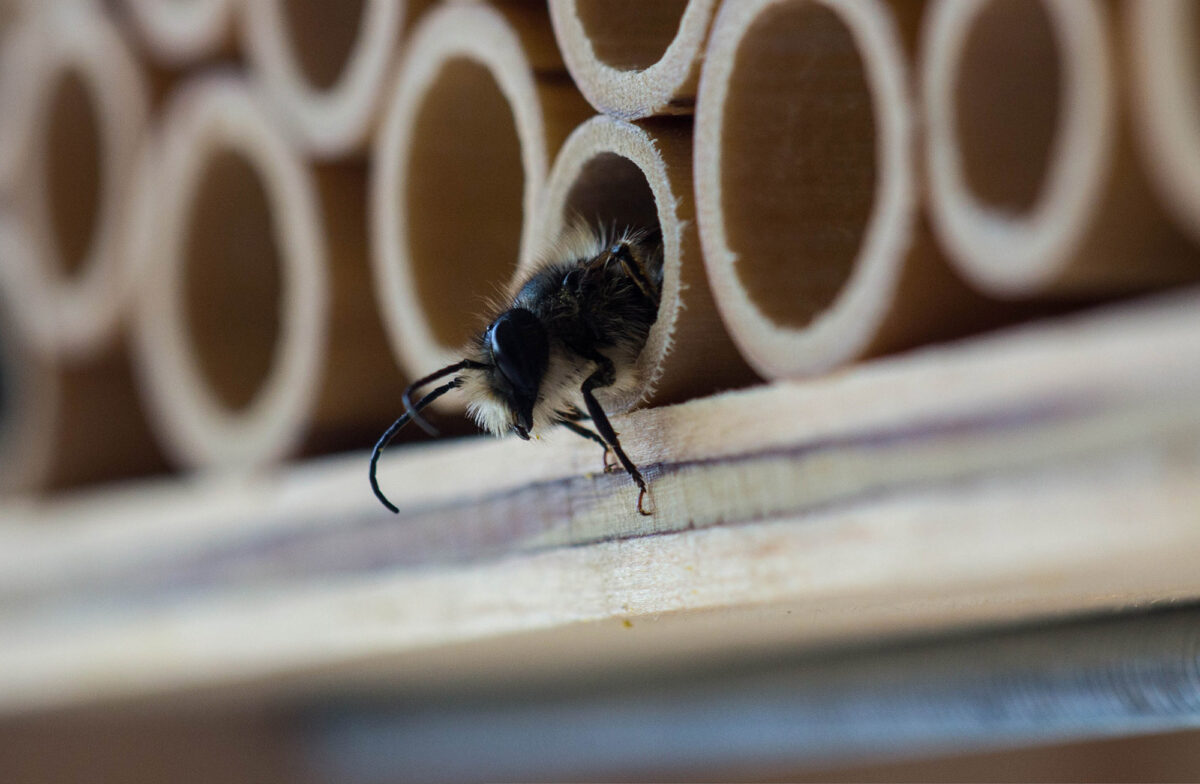Need to add some buzz to your life without caffeine? Bee houses might be perfect for you. While building and maintaining a bee house isn’t for everyone, it is a great way to be a friend to these little critters. Most people have heard about the issues bees face, and many know how important bees are as pollinators. So, how can you help support these important insects? If you don’t have the green thumb required for a pollinator garden, consider setting up a DIY bee house for Earth Day (April 22) this year.
But wait! Before jumping into this project, there are some things you should know first. Unfortunately, even if you have the best of intentions, it’s possible to cause more harm than good when setting up a bee house.

As Gwen Pearson, an entomologist at Purdue University, told Earther, “It’s such a fantastic desire to be helpful and fix the things we see that are broken around us. That’s wonderful and I honor that so much, but the problem is the world is really complex.” Before building a bee house, research native bees in your area. Not all species will benefit from a bee house, and many bees throughout the United States are solitary creatures.

Prospective bee house builders should also know what maintaining a bee house entails. If these structures aren’t cared for and kept up, they can attract pollen mites. These mites can steal food from bees and even latch onto them. Avoid issues like this with routine bee house cleaning and maintenance. Only install a bee house if you can commit to monitoring it for moisture, pests, and predatory birds.
If you’re not scared off by these stipulations, then congratulations! You might have what it takes to keep a bee house in your yard. Here’s what you’ll need to get started.
DIY bee house materials
Before building, gather the right materials and know which materials to avoid. Speaking of materials to avoid, don’t build with bamboo. This reedy material can trap moisture, which isn’t ideal for bee houses.
Instead, build with untreated pine wood, or even harder woods. The main structures in your bee house will be wood blocks with hollow tubes in which bees can nest. Cardboard tubes and paper straws can be used to create these tubes.
Bee house building instructions
Bee houses can vary from simple container homes to multi-level bee hotels. If you want to start with a simple container home, repurpose old containers. Thoroughly clean your container of choice, poke holes in the sides to create air vents, and fill the container with paper straws or small cardboard tubes. When placing the container home, choose a spot where it will be sheltered from wind and rain. Too much of either will disturb the bees. Crown Bees can provide further guidance if you face issues during your build.
Pros seeking a more involved bee house set-up may want to explore designs for a bee hotel. These larger structures can feature several levels of nesting trays for bees. Find a high-quality mason bee hotel design from Colin Purrington, bee enthusiast and former evolutionary biology professor at Swarthmore College, here.
